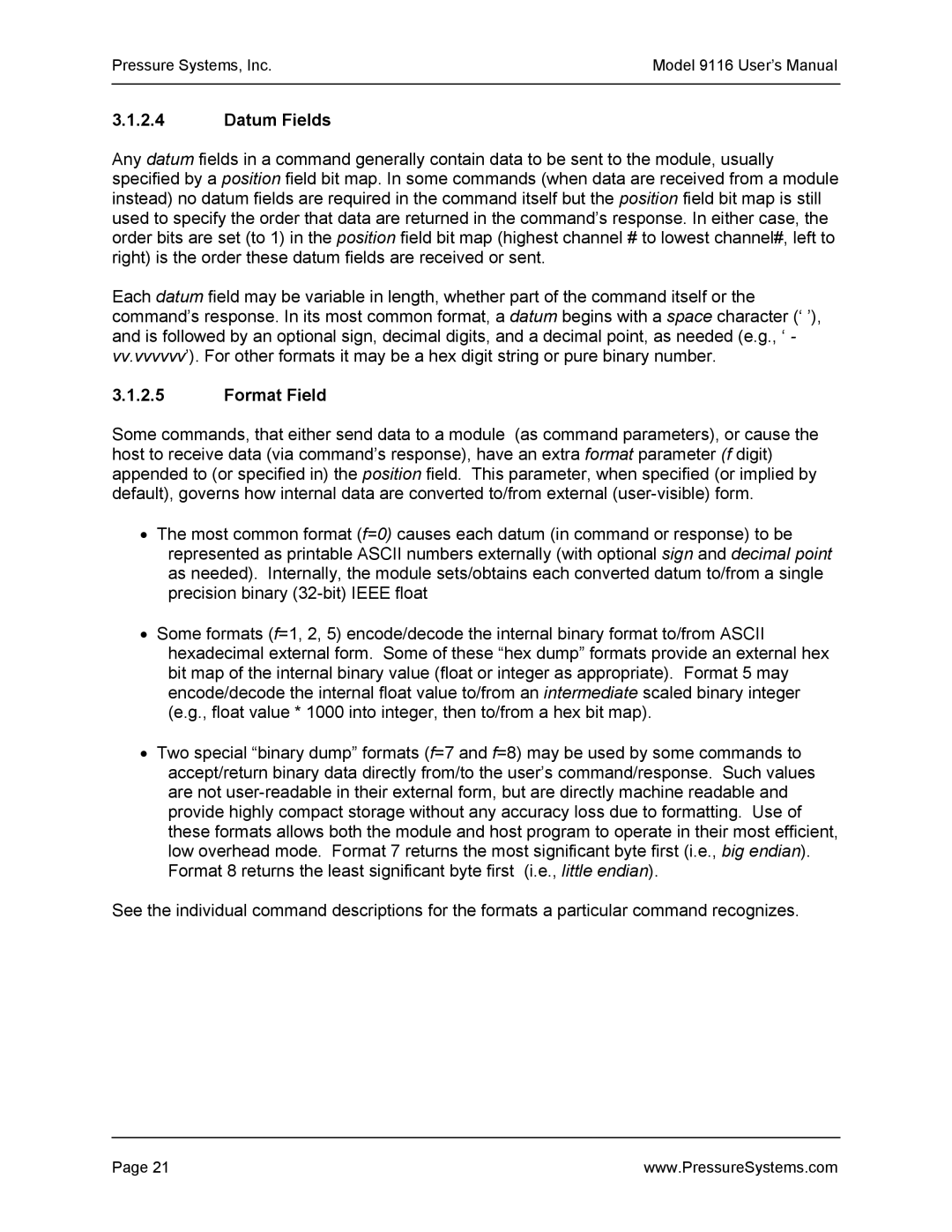Pressure Systems, Inc. | Model 9116 User’s Manual |
|
|
3.1.2.4Datum Fields
Any datum fields in a command generally contain data to be sent to the module, usually specified by a position field bit map. In some commands (when data are received from a module instead) no datum fields are required in the command itself but the position field bit map is still used to specify the order that data are returned in the command’s response. In either case, the order bits are set (to 1) in the position field bit map (highest channel # to lowest channel#, left to right) is the order these datum fields are received or sent.
Each datum field may be variable in length, whether part of the command itself or the command’s response. In its most common format, a datum begins with a space character (‘ ’), and is followed by an optional sign, decimal digits, and a decimal point, as needed (e.g., ‘ - vv.vvvvvv’). For other formats it may be a hex digit string or pure binary number.
3.1.2.5Format Field
Some commands, that either send data to a module (as command parameters), or cause the host to receive data (via command’s response), have an extra format parameter (f digit) appended to (or specified in) the position field. This parameter, when specified (or implied by default), governs how internal data are converted to/from external
•The most common format (f=0) causes each datum (in command or response) to be represented as printable ASCII numbers externally (with optional sign and decimal point as needed). Internally, the module sets/obtains each converted datum to/from a single precision binary
•Some formats (f=1, 2, 5) encode/decode the internal binary format to/from ASCII hexadecimal external form. Some of these “hex dump” formats provide an external hex bit map of the internal binary value (float or integer as appropriate). Format 5 may encode/decode the internal float value to/from an intermediate scaled binary integer (e.g., float value * 1000 into integer, then to/from a hex bit map).
•Two special “binary dump” formats (f=7 and f=8) may be used by some commands to accept/return binary data directly from/to the user’s command/response. Such values are not
See the individual command descriptions for the formats a particular command recognizes.
Page 21 | www.PressureSystems.com |
